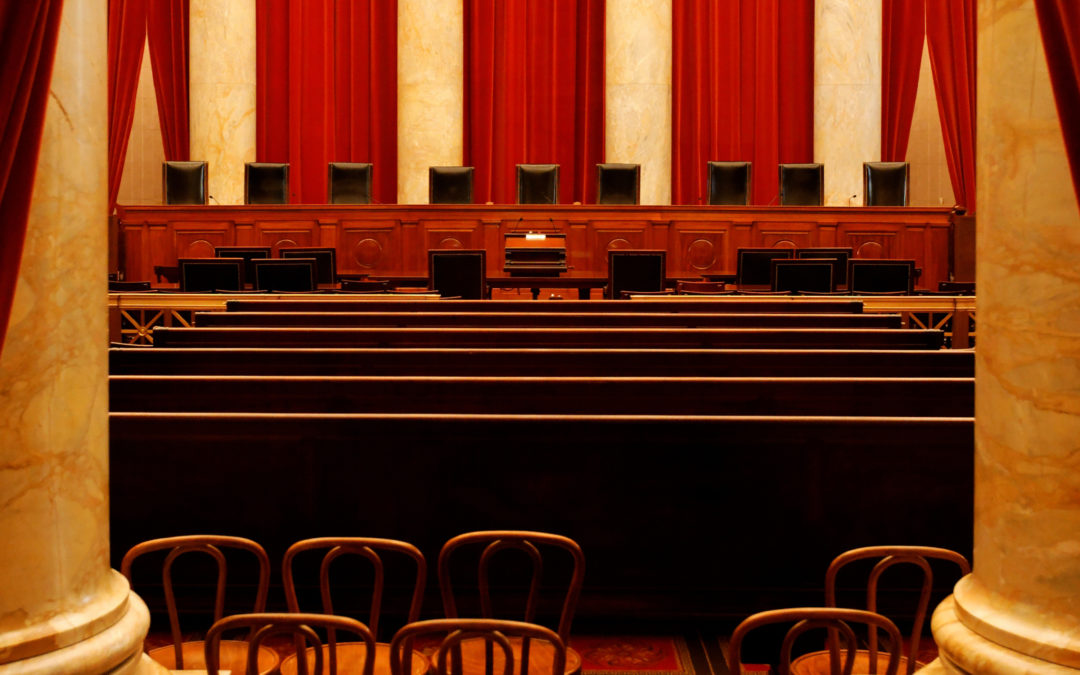The Supreme Court convenes for a new term on October 3rd, the traditional first Monday in October following the summer recess. In honor of this event, we have compiled some information about the Court and its procedures.
The highest federal court in the United States, the Supreme Court is responsible for deciding cases that may affect your business or even change your daily life. The Court hears around 80 cases per term, just a small number of the 7,000-8,000 case petitions that they usually receive. They choose cases that can have a significant impact such as resolving disputes between states (for example, water rights) or looking at legal issues that may be treated differently in various parts of the country.
While the number of Justices has varied over time, there are the currently nine Justices – one Chief Justice and eight Associate Justices. Justices are nominated by the President with the advice and consent of the Senate. When the new court convenes it will be absent one member, as a result of the death Justice Antonin Scalia. President Obama has nominated Merrick Garland, currently Chief Judge of the US Circuit Court of Appeals for the DC Circuit, to fill the vacancy; however, the Senate has not held any confirmation hearings.
For attorneys, understanding the ins and outs of the Supreme Court and its cases can have particular value, especially when involved in similar types of litigation. Reviewing court documents allows the attorney to see what arguments were used in the case.
The Court’s website, provides access to opinions, orders, Court calendars, transcripts, schedules, rules, visitors’ guides, press releases and other resources. Opinions are typically accessible on the website within a few minutes of their release from the Bench. Briefs are available for the current Term by clicking on the Merits Briefs link.
But as a business owner or executive outside the legal industry, why is it important to pay attention to the Supreme Court? According to recent research, business cases are increasingly making their way to the Supreme Court docket. For example, in a recent ruling in the case Tyson Foods v. Bouaphakeo, employees sued the company for failing to pay overtime for the time they spent putting on/ taking off protective gear.
The Court ruled that plaintiffs may use a statistical sample as long as the evidence is reliable. A ruling which Donald Scarinci, founding partner of Scarinci Hollenbeck, argues “will likely make it easier for employees to maintain wage and hour class-action claims.” Do you know what other cases are impacting your business?

